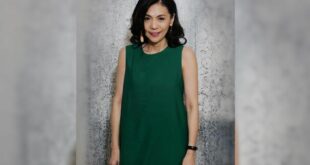Noëll EL Farol explores uncharted territories
For as long as man has learned to think, one question he has always grappled with is figuring out his ultimate purpose for being. Scientists, philosophers, and even non-believers may offer unique and contrasting answers any given day, none of which however, is accepted to be absolute. Yet.
What about artists? Unconstrained by rules and with an unlimited range of imagination at their disposal, could they offer through their art, something that would push forward intellectual discourse?

In Noēll El Farol’s “Cosmographia,” there is a sense of self-reflection that one feels while simply meditating on his works.
“’Cosmographia’ is understanding the unseen form of matter,” El Farol says. “As we all know, matter or objects do not sit alone in the human or natural world. When these objects or matter interact with humans, they acquire new meanings and develop relationally new definitions that refer to their capabilities in their engagement with another in a specific world. While cosmos is another term for the universe, it is the totality of all the matter in the existence of space.”
Suddenly, the definition of the cosmos as being “all of creation and particularly on the scale of the stars, the planets, the black holes, and all the stuff we don’t know about,” starts to make sense.
The exhibition is inspired by the artist’s recent participation in the Nakanojo Biennale, an international contemporary art festival held every two years in a small rural town in the Gunma Prefecture. The biennale’s theme “Cosmographia – Tracing the Invisible Land,” is itself inspired by an encyclopedic geographical book by the German cartographer Sebastian Münster that was published in the 16th century. The book covers the people, manners, customs, history, and religions of the world. Prior to the invention of airplanes, most world maps were drawn from imagination, and Münster envisioned the unseen world and created beautiful prints.

“It was constructed to recreate what the world looked like during the 16th century using an imaginary geographical world through engravings and woodblock prints (where) Münster’s scholarly understanding of the imaginary and unexplored world across all human history is reflected through his ‘ethos of his humanist community,’ including prodigies of nature and lessons of fallen civilization,” says El Farol. “I take inspiration from the title of the biennale as a way of conveying the experience. I would like to delve in the visual treasure trove of imaginary ideas of distant lands presented in prints, the uncharted territories, and marvels of the universe. It is an attempt to interconnect art and science.”
In creating the pieces, El Farol says that he tried to find balance between control and the unpredictability of the medium. The artist takes his cue from the cosmos as he continuous to explore uncharted territories using pigment powder much like how cluster of particles move through space where gravity plays a role in creating visual results that man’s limited knowledge can barely comprehend.
“My intention is to strip away the essentials of drawing, painting, and printmaking and relate to some timeless understanding that the media can offer,” El Farol says. “I tried to manipulate the materials again until I could feel the work was complete. I am immersed in experiencing the process during art making… from these uncharted territories and an imagined world.”

Still, the artist remains in complete control of his art. Utilizing circles in some of the pieces perhaps represents his role of an observer of both the familiar and unfamiliar while remaining on his own personal journey of discovery.
For him, working with various materials creates one’s own concept and enforces it against any resistance in the mainstream. And in his experience, the work becomes interesting when materials offer difficulties and resistance mostly when they have never been done before.
“The search for individuality and autonomy is part of it,” he says. “Combining serigraphy and drawing on paper and attempting to reassign new meanings to objects to breathe new life from experimented materials are what I have been doing since I started to make art. Throughout the years, the narratives of my work may have changed but my process, or the alchemy is what I’ve armed myself with.”

Having worked with various media such as glass, ceramic, glazes, silica, oxides, stone, and steel, El Farol’s continuous practice gives him an understanding of the nature of things, finding connections that may not be visible but are essential nonetheless in helping mankind move closer to understanding its role in the grand scheme of things.
“Cosmographia” by Noëll EL Farol will run until January 31, 2024 at the Galleria Duemila, 210 Loring Street 1300 Pasay City, Manila. For inquiries art@galleriaduemila.com Contact numbers +63 2 8831 9990 or +63908 307 9972. — Dexter R. Matilla
Email the author dxmatillawrites@gmail.com.
*****
Credit belongs to : www.mb.com.ph
 Atin Ito First Filipino Community Newspaper in Ontario
Atin Ito First Filipino Community Newspaper in Ontario






